Drawing People: Beginners Guide
Welcome to the exciting world of drawing people! If you've ever looked at a stunning piece of art and thought, "I wish I could do that," you're in the right place. This guide provides essential tips and techniques for beginners to effectively draw people, covering proportions, poses, and expressions to enhance your artistic skills and confidence. Drawing the human figure can seem daunting at first, but with practice and a little guidance, you'll be capturing the essence of humanity on paper in no time!
Mastering human proportions is crucial for realistic drawings. Think of proportions as the building blocks of your figure; they provide a framework that ensures your drawings look believable. The human figure is often described in terms of basic measurements and ratios. For instance, a common method is the "8-heads tall" rule, where the height of the human body is roughly eight times the height of the head. By familiarizing yourself with these ratios, you can create accurate representations that resonate with viewers.
To illustrate, consider the following basic proportions:
| Body Part | Proportion |
|---|---|
| Head | 1 unit |
| Torso | 2-3 units |
| Legs | 4-5 units |
By using these proportions as a guide, you can start sketching your figures with a solid foundation, ensuring that they look natural and well-balanced.
Dynamic poses can bring life to your drawings. Imagine a dancer mid-leap or a runner in full stride; these moments are bursting with energy and emotion. Here, we discuss techniques for observing and sketching various poses, emphasizing movement and balance. Capturing the essence of a pose is about understanding the flow of the body and how each part interacts with the others.
So, what's the difference between static and dynamic poses? Static poses are those that are still, like a model holding a pose for a portrait. They convey a sense of calm and stability. On the other hand, dynamic poses are all about action and movement, creating a sense of excitement and urgency. Understanding how each type of pose influences the overall feel of your drawing will enhance your ability to convey emotion and action. Think of it like telling a story; the pose sets the scene!
To capture dynamic poses quickly, consider these practical tips:
- Gesture Drawing: Focus on the movement and flow rather than details. This technique allows you to capture the essence of the pose in just a few lines.
- Use Action Lines: Draw a simple line that follows the flow of the pose. This will help you maintain balance and proportion throughout your sketch.
- Practice from Life: Observing real-life subjects in motion can greatly improve your ability to depict dynamic poses accurately.
Creating a library of poses can be invaluable for your artistic journey. Collect references from various sources, including photographs, online resources, and even videos. By practicing from these references, you can improve your skills and develop a deeper understanding of human anatomy and movement. Think of it as assembling a toolbox; the more tools you have, the better equipped you are to tackle any project!
Utilizing reference images can significantly enhance your understanding of anatomy and movement. They serve as a visual guide, helping you see how muscles and joints work together. When using references, try to analyze the subject's posture, weight distribution, and how light interacts with the body. This practice will improve your drawings and give you the confidence to experiment with your own poses.
Facial expressions are vital for conveying emotion. A simple smile or frown can tell an entire story! This section will guide you through the basics of drawing different expressions and the underlying anatomy involved. By mastering facial expressions, you can breathe life into your characters and make them relatable.
A solid grasp of facial anatomy is essential for realistic expressions. The face is a complex structure made up of various features, each playing a role in conveying emotions. For instance, the eyebrows can indicate surprise or anger, while the mouth can express happiness or sadness. Understanding how these features interact will allow you to depict emotions more accurately in your drawings.
Engaging in practice exercises can significantly improve your skills. Try sketching different emotions by focusing on one facial feature at a time. For example, draw a series of mouths expressing various emotions, then move on to the eyes. Repetition and observation are key, so don’t hesitate to practice daily. Remember, even the greatest artists started as beginners!
Shading adds depth and dimension to your drawings. It’s what transforms a flat sketch into a lifelike representation. This section will cover different shading techniques that can enhance the realism of your people drawings. By understanding how to manipulate light and shadow, you can create stunning visuals that capture the viewer's attention.
Explore various shading techniques such as hatching, cross-hatching, and blending. Each technique has its own unique effect:
- Hatching: Using parallel lines to create texture and depth.
- Cross-Hatching: Layering lines in different directions to intensify shadows.
- Blending: Smooth transitions between light and dark areas for a softer look.
Learning when to use each technique will add variety and interest to your artwork.
Understanding light and shadow is key to creating depth. Light sources can dramatically affect how we perceive shapes and forms. When drawing, consider where the light is coming from and how it interacts with the human figure. Shadows can enhance the three-dimensionality of your subjects, making them pop off the page. Think of light as your guide, leading the viewer's eye through your artwork.
Every beginner makes mistakes, and that's perfectly okay! This section highlights common pitfalls in drawing people and offers tips on how to avoid them for better results. Embrace your mistakes as learning opportunities!
Ignoring proportions can lead to unrealistic figures. It's important to regularly check and correct proportions as you draw. Take a step back and evaluate your work; sometimes, a fresh perspective can reveal discrepancies you didn't notice before. Remember, practice makes perfect!
Details can make or break a drawing. While it's essential to incorporate essential features, be cautious not to overwhelm the viewer. Striking a balance between detail and simplicity is crucial. Aim for clarity and focus on what truly matters in your drawing.
Q: How can I improve my drawing skills?
A: Practice regularly, study from references, and don't be afraid to experiment with different techniques!
Q: What materials do I need to start drawing?
A: All you need is a pencil and some paper to begin. As you progress, you can explore different mediums like charcoal or digital tools.
Q: Should I focus on realism or stylization?
A: It depends on your personal style! Start with realism to understand the basics, then explore stylization as you become more comfortable.
By following this guide, you'll be well on your way to mastering the art of drawing people. Remember, every stroke brings you closer to your artistic goals. Happy drawing!
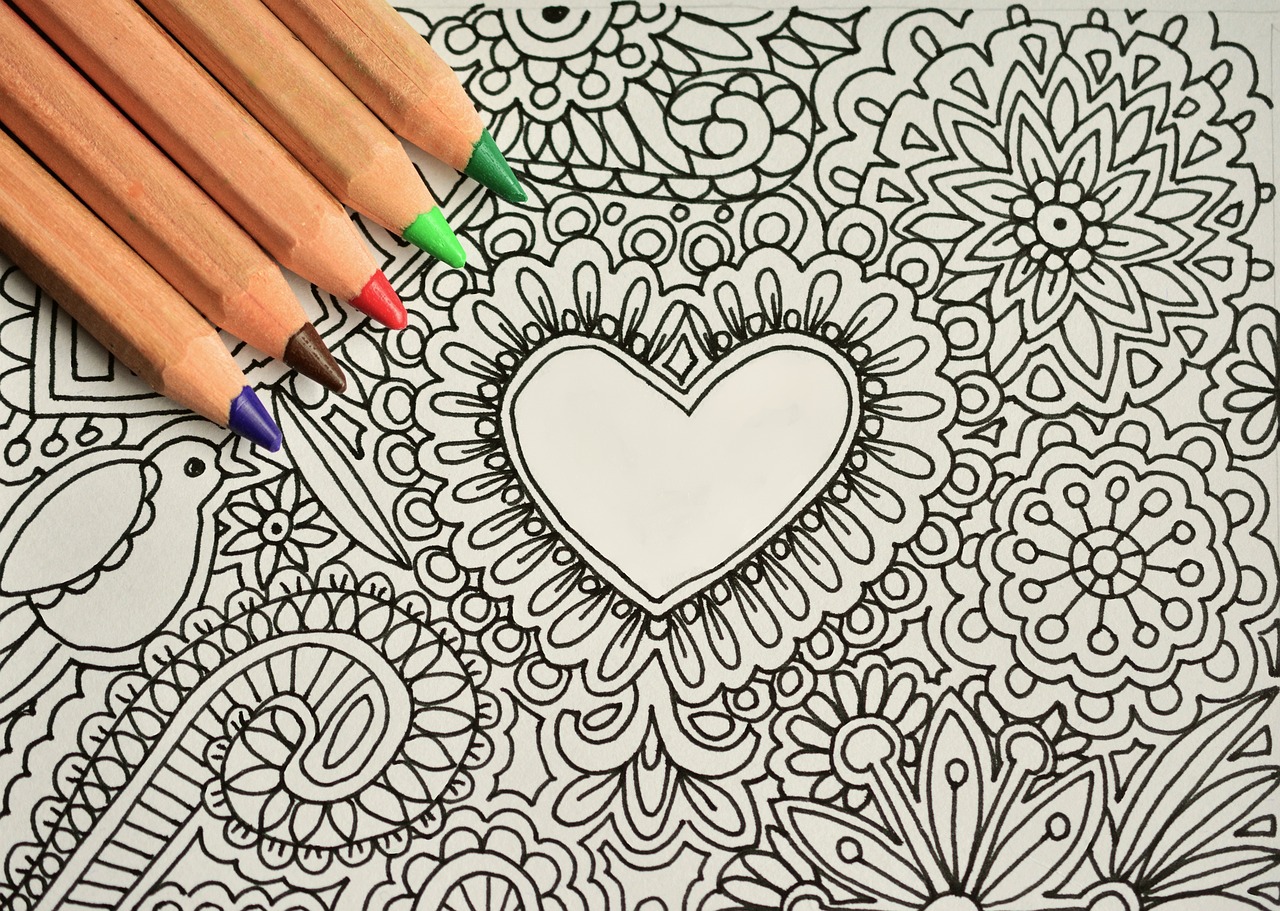
Understanding Proportions
Mastering human proportions is crucial for realistic drawings. When you think about drawing people, it might feel overwhelming at first, but understanding the basic measurements and ratios that define the human figure can make a world of difference. Imagine trying to build a house without a blueprint; it would be chaotic and frustrating! Similarly, without a grasp of proportions, your drawings may end up looking distorted or unrealistic.
To kick things off, let’s break down the general proportion of the human body. The average adult figure can be divided into eight equal parts, often referred to as "head lengths." This means that if you measure the height of the head, you can use that measurement as a unit to gauge the rest of the body's height. Here’s a simple breakdown:
| Body Part | Proportion (in head lengths) |
|---|---|
| Head | 1 |
| Neck | 1/2 |
| Torso | 2.5 |
| Legs (combined) | 4 |
| Arms (combined) | 2.5 |
As you can see, proportions play a vital role in making your drawings look more lifelike. But remember, these are just guidelines! Every individual has unique features and body shapes, so it’s essential to observe real-life models or photographs to capture those nuances. Think of proportions as your artistic GPS; they guide you but allow for deviations based on your creative vision.
Another essential aspect of proportions is understanding the relationship between different body parts. For instance, the width of the shoulders is typically about two head lengths, while the hips can be roughly the same width as the shoulders in many figures. Observing these relationships can help you establish a solid foundation for your drawings. You might find it helpful to do some quick sketches of people around you, focusing solely on getting the proportions right before adding details.
One effective technique to improve your understanding of proportions is to practice drawing simple shapes. Start by breaking down the human figure into basic geometric forms such as circles, rectangles, and ovals. This method simplifies complex structures and allows you to focus on proportion without getting lost in details. For example, envision the head as a circle and the torso as a rectangle. By stacking these shapes, you can visualize how the body parts relate to one another.
In summary, understanding proportions is about recognizing the balance and relationships within the human figure. As you practice, you'll develop a more intuitive sense of how to draw people accurately. Don’t be afraid to make mistakes along the way; each error is a stepping stone to becoming a better artist. So grab your sketchbook and start observing the world around you—your journey in mastering proportions has just begun!
- What are the basic proportions for drawing a human figure?
Typically, the human figure can be divided into eight head lengths, with specific measurements for different body parts. - How can I improve my understanding of proportions?
Practice drawing from life, use reference images, and break down the figure into simple shapes to see the relationships between body parts. - Are these proportions the same for everyone?
No, while these are general guidelines, individual body types vary greatly, so it's important to observe and adapt.

Capturing Poses
When it comes to drawing people, capturing poses is like adding the final touch of magic to a painting. A well-executed pose can breathe life into your artwork, making it feel dynamic and engaging. Think of it this way: if the human figure is a story, then the pose is the plot twist that keeps the viewer hooked. To truly master this art, you need to observe how the body moves and balances in various positions. It’s not just about the physical stance; it’s about the emotion and energy that the pose conveys.
One of the best ways to start is by practicing with gesture drawing. This technique involves quickly sketching the basic shapes and lines of a figure in motion, focusing on the overall flow rather than the intricate details. By doing this, you can capture the essence of a pose in just a few strokes. It’s like sketching a quick outline of a story before filling in the details. Aim for speed and fluidity—try to complete a gesture drawing in under two minutes! This approach will help you become more comfortable with the human form and its natural movements.
To enhance your skills, consider exploring both static and dynamic poses. Static poses are those where the subject is relatively still, like someone sitting or standing. These poses are great for understanding proportions and anatomy. On the other hand, dynamic poses involve movement, such as a dancer leaping or an athlete in action. These poses can be more challenging but incredibly rewarding, as they convey a sense of motion and life. Understanding the differences between these types of poses will help you decide which to use based on the emotion or action you want to depict.
Static poses often exude a sense of calm and stability. They allow you to focus on the details of the human figure, such as the curves of the body and the intricacies of clothing. In contrast, dynamic poses are all about energy and motion. They can tell a story at a glance, evoking feelings of excitement or tension. When practicing, try to switch between both types of poses to develop a well-rounded skill set. This balance will give your drawings versatility and depth, making them more appealing to the viewer.
To effectively sketch dynamic poses, consider these practical tips:
- Use Reference Images: Look for photos or videos of people in action. This can provide a clearer understanding of how the body moves.
- Start with Basic Shapes: Break down the human figure into simple shapes like circles and rectangles. This will help you visualize the pose more easily.
- Focus on Lines of Action: Identify the main line of movement in the pose. This line will guide the flow and direction of your drawing.
- Practice Gesture Drawing: As mentioned earlier, quick sketches can help you capture the essence of movement without getting bogged down in details.
Creating a personal library of poses can be a game-changer for your artistic journey. This library can be a collection of reference images, sketches, or even notes on poses you find inspiring. Whenever you encounter a pose that catches your eye, whether in a magazine or during a live drawing session, take a moment to capture it. Over time, you’ll build a resource that you can draw from whenever you need inspiration. This practice not only enhances your understanding of human anatomy but also helps you develop your unique style.
In conclusion, capturing poses is an essential skill for any artist looking to draw people effectively. By focusing on gesture drawing, understanding the differences between static and dynamic poses, and building a reference library, you’ll find yourself creating more engaging and lifelike artwork. Remember, practice is key, so don’t hesitate to experiment and push your boundaries!
Q1: How do I improve my ability to capture poses?
A1: Regular practice is crucial. Engage in gesture drawing and use reference images to familiarize yourself with different poses. Over time, you'll notice improvements in your ability to capture movement and emotion.
Q2: What are some good resources for finding pose references?
A2: Websites like Pinterest, photography sites, and life drawing classes can be excellent sources for pose references. You can also consider using apps designed for artists that offer pose references.
Q3: Should I focus on dynamic or static poses as a beginner?
A3: It's beneficial to practice both. Static poses help you understand proportions and anatomy, while dynamic poses teach you about movement and energy. A mix of both will enhance your overall skills.
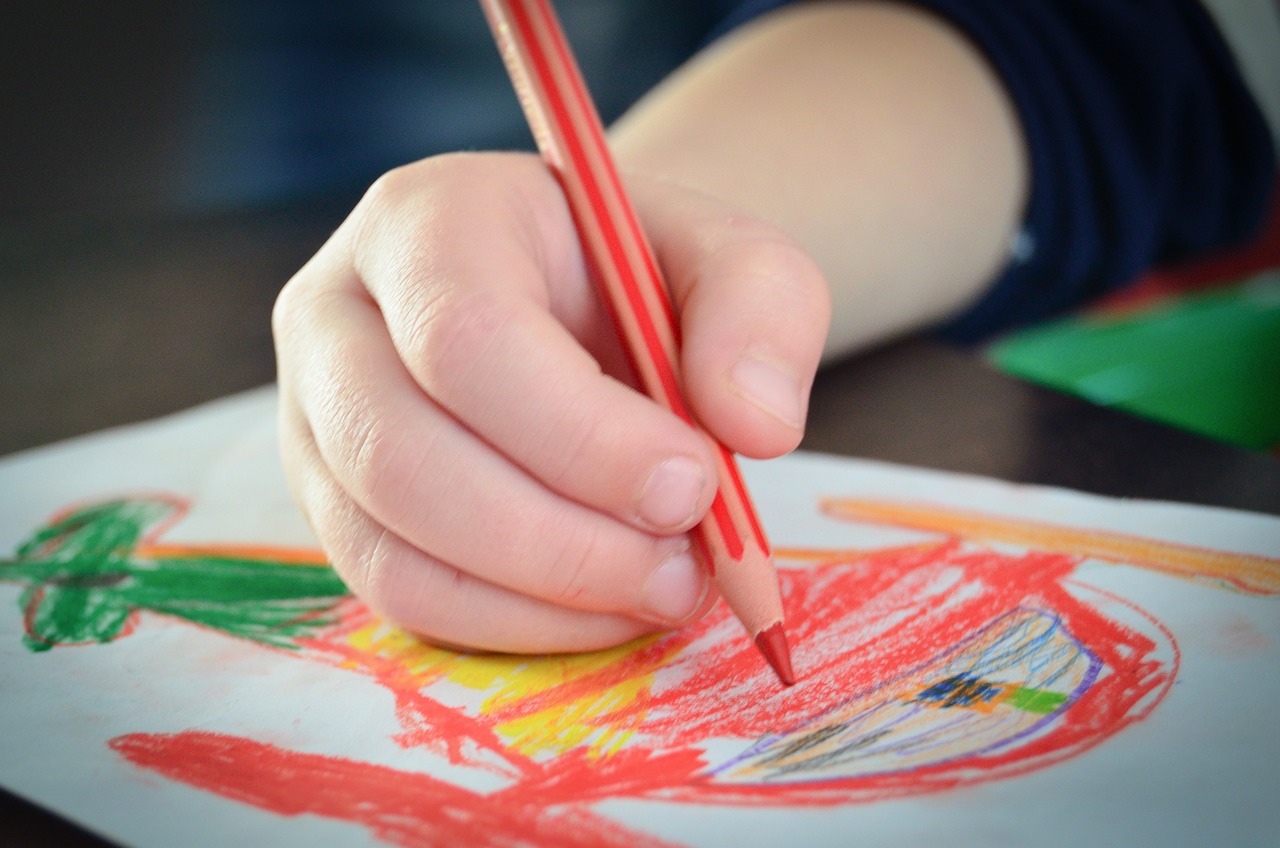
Static vs. Dynamic Poses
When diving into the world of drawing people, understanding the difference between static and dynamic poses is essential. Think of static poses as the calm before the storm—these are the moments captured in time where the subject is relatively still. Imagine a statue or a person posing for a portrait; their body is in a fixed position, allowing you to focus on the details, proportions, and features without the distraction of movement. Static poses are fantastic for honing your skills in anatomy and proportions because they provide a clear view of the subject without the complications of motion.
On the flip side, dynamic poses are like a burst of energy—full of life and movement! These poses showcase action, emotion, and the natural flow of the human body. Picture an athlete in mid-jump or a dancer caught in a graceful leap. Dynamic poses challenge you to capture not just the physical form, but also the energy and emotion behind the movement. They require a keen eye for balance and weight distribution, making them a bit trickier to master, but oh so rewarding when done right!
Here’s a quick comparison to help you visualize the differences:
| Aspect | Static Poses | Dynamic Poses |
|---|---|---|
| Movement | Minimal or none | Full of action and energy |
| Focus | Details and proportions | Flow and emotion |
| Difficulty | Generally easier for beginners | More challenging but rewarding |
To truly excel in drawing people, it’s crucial to practice both static and dynamic poses. Start by sketching static poses to build your foundation. Once you feel comfortable with proportions and anatomy, gradually introduce dynamic poses into your practice. This progression will not only enhance your skills but also expand your artistic range, allowing you to convey a wider array of emotions and actions in your artwork.
So, the next time you pick up your pencil, consider what story you want to tell. Will it be a moment frozen in time, or a vibrant display of movement? Each choice will guide your hand and shape your artistic journey!
- What are the best resources for practicing poses? Look for online figure drawing websites, art books, and even social media platforms where artists share their work. Websites like Quickposes and Line of Action are great for timed practice!
- How can I improve my understanding of anatomy? Studying anatomy books, attending life drawing classes, and practicing from real-life models can be incredibly beneficial. Additionally, using 3D anatomy apps can help visualize the human body from different angles.
- What tools do I need to start drawing people? A sketchbook, pencils, and an eraser are all you really need to get started. As you progress, you might want to experiment with charcoal, ink, or digital tools.
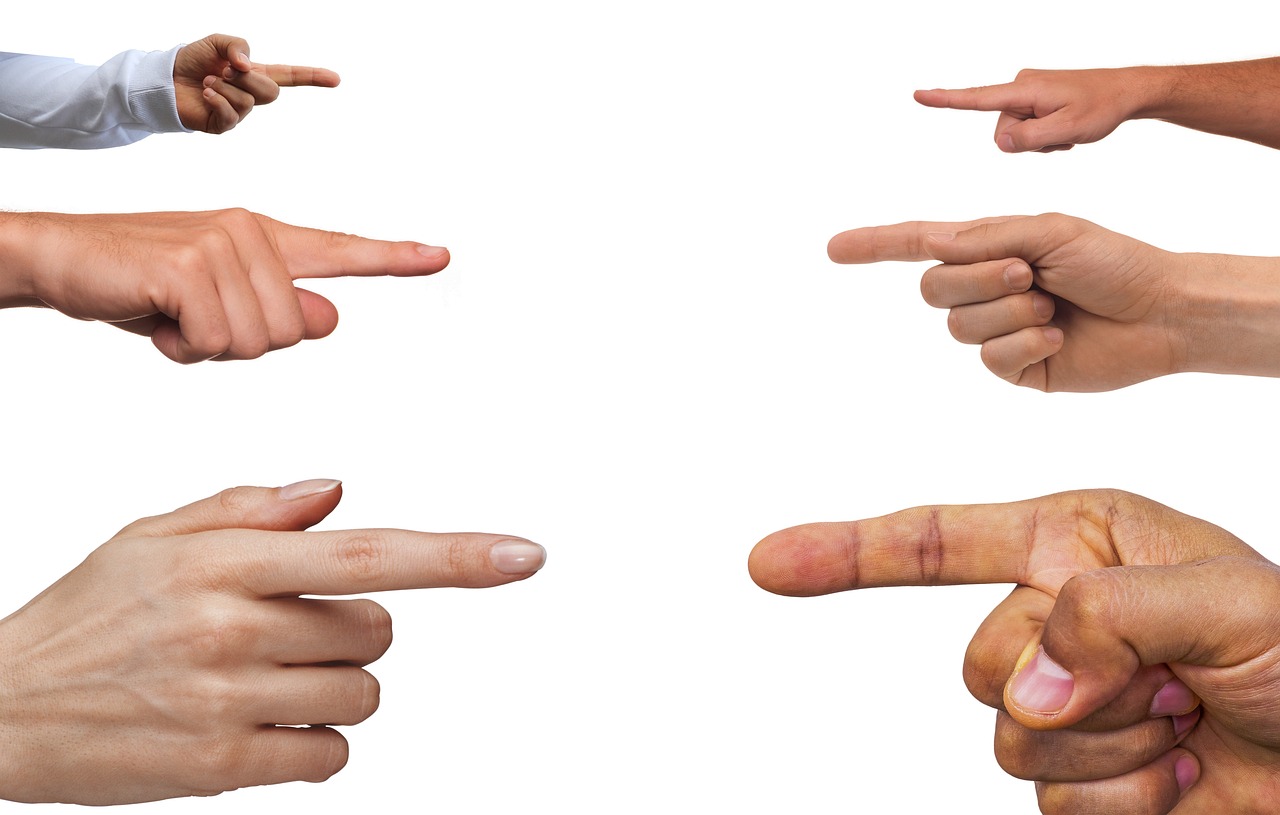
Tips for Sketching Dynamic Poses
When it comes to sketching dynamic poses, the goal is to capture the essence of movement and energy in your drawings. A static figure can often feel lifeless, but by incorporating dynamic elements, you can breathe life into your artwork. Here are some essential tips to help you get started:
1. Start with Gesture Drawing: Gesture drawing is a technique that focuses on the basic form and flow of a pose rather than the details. Spend a few minutes sketching quick, loose lines to capture the overall movement. This will help you understand the pose's dynamics without getting bogged down in specifics. Aim for 30-second to 2-minute sketches to really get the feel of the movement.
2. Use Simple Shapes: Break down the human figure into simple shapes like circles, ovals, and rectangles. This method allows you to visualize the body parts in relation to each other. For instance, use an oval for the torso, circles for the joints, and cylinders for the limbs. By simplifying the anatomy, you can focus on the pose's action and flow.
3. Pay Attention to Lines of Action: The line of action is an imaginary line that runs through the body to indicate the direction of movement. It can help you create a sense of rhythm in your drawings. For example, if a character is jumping, the line of action might curve upwards, showing the motion of the leap. Always consider this line when sketching to enhance the dynamism of your figures.
4. Observe Real-Life Movement: One of the best ways to improve your dynamic poses is to observe real-life movement. Whether it’s watching athletes in action, dancers performing, or simply people walking down the street, take note of how the body moves. You can even take short videos or photos to analyze later. This practice will sharpen your ability to depict movement accurately.
5. Experiment with Foreshortening: Foreshortening is a technique that creates an illusion of depth by depicting an object or figure in a picture in depth. It can make your poses appear more dynamic and engaging. For example, when drawing a figure reaching towards you, emphasize the parts of the body that are closer to the viewer while minimizing the parts that are farther away. This creates a three-dimensional effect that enhances the action.
Incorporating these techniques into your practice will elevate your ability to sketch dynamic poses. Remember, the key is to practice regularly and not be afraid to make mistakes. Each sketch is a step closer to mastering the art of dynamic figure drawing!
- What is gesture drawing? Gesture drawing is a quick sketching technique that captures the basic form and movement of a figure, emphasizing action over detail.
- How can I improve my observation skills for drawing? Regularly practice drawing from life, whether it’s people, animals, or objects. Taking photos or videos can also help you analyze movement later.
- What is foreshortening, and how do I use it? Foreshortening is a technique used to create the illusion of depth in a drawing. To use it, emphasize the parts of a figure that are closer to the viewer and minimize those that are farther away.

Building a Pose Library
Creating a pose library is an essential step for any aspiring artist looking to improve their skills in drawing people. Think of it as your personal treasure trove of references, where you can find inspiration and guidance whenever you need it. By collecting various poses, you can study the nuances of movement, balance, and anatomy, which are crucial for bringing your drawings to life.
To begin building your pose library, start by observing the world around you. Whether you're at a café, in a park, or attending a sporting event, take note of how people move and interact. You can even snap some quick photos or make rough sketches to capture these moments. Additionally, consider using online resources and platforms that offer a plethora of reference images. Websites like Pinterest and DeviantArt are great places to find dynamic poses.
Once you have gathered a collection of images, organize them in a way that makes sense to you. You might want to categorize your library based on different themes, such as action poses, relaxed poses, or even specific emotions. This organization will save you time in the long run and make it easier to find the right pose for your drawing. Here’s a simple table to illustrate how you might categorize your pose library:
| Category | Description |
|---|---|
| Action Poses | Dynamic movements, such as running, jumping, or dancing. |
| Relaxed Poses | Casual stances, like sitting or leaning against a wall. |
| Expressive Poses | Phrases that convey strong emotions, such as joy or anger. |
Another effective method for building your pose library is to practice gesture drawing. This technique involves making quick sketches of poses within a limited timeframe, usually ranging from 30 seconds to a few minutes. The goal here is not to focus on details but rather to capture the essence of the pose. Over time, this will enhance your ability to understand and replicate various movements.
Lastly, don’t forget to regularly update your pose library. As you grow and evolve as an artist, your needs and interests will change. So, keep adding new references and discarding old ones that no longer resonate with your style. This practice not only keeps your library fresh but also encourages continuous learning and improvement.
Q: How many poses should I include in my library?
A: There’s no specific number, but aim for a diverse range of poses that cover various actions and emotions. Quality over quantity is key!
Q: Can I use photos from the internet in my library?
A: Yes, but make sure to respect copyright laws. Use images that are labeled for reuse or consider taking your own photographs.
Q: How often should I practice using my pose library?
A: Consistency is crucial. Try to incorporate poses from your library into your practice sessions at least a few times a week.

Using Reference Images
When it comes to drawing people, one of the most powerful tools at your disposal is the use of reference images. These images serve as a visual guide that can significantly enhance your understanding of anatomy, posture, and movement. Think of reference images as your artistic GPS; they help you navigate the often tricky terrain of human proportions and expressions. Without them, you might find yourself lost in a sea of confusion, unsure of how to depict the human figure accurately.
Using reference images can also save you a lot of time and frustration. Instead of guessing how a hand should look when it’s in a certain position or how the muscles flex when someone is in motion, you can simply look at a photograph or a drawing that captures that exact moment. This practice not only helps you achieve more realistic results but also builds your confidence as you see your skills improve.
To make the most out of your reference images, consider the following tips:
- Choose High-Quality Images: Look for clear, high-resolution images that showcase the details you want to capture in your drawing.
- Analyze the Anatomy: Pay close attention to the underlying structure of the body. Notice how the muscles and bones interact, especially in areas like the joints.
- Observe Light and Shadow: Reference images often come with natural lighting that can help you understand how to shade your drawing effectively.
- Use Multiple References: Don’t limit yourself to just one image. Gathering multiple references can provide different angles and perspectives, enriching your understanding of the subject.
Additionally, a great way to practice is to create a reference library of your own. This library can include images from various sources—photographs, art books, or even your own snapshots. Organizing these images based on categories like 'poses', 'facial expressions', or 'clothing' can make it easier to find the right reference when you need it. Just like a chef who has a well-stocked pantry, having a variety of references at your fingertips can lead to more creative and inspired drawings.
Lastly, remember that while reference images are incredibly helpful, they should serve as a guide rather than a crutch. As you grow more confident in your skills, try to draw without relying too heavily on references. This will help you develop your own style and understanding of the human figure, allowing your personal artistic voice to shine through.

Facial Expressions
Facial expressions are the windows to our emotions, and when it comes to drawing people, they play a crucial role in conveying feelings and personality. Whether you're illustrating joy, sadness, anger, or surprise, understanding how to depict these expressions accurately can elevate your artwork to a whole new level. Imagine a character smiling brightly; their eyes might sparkle, and their mouth curves upward, instantly making them relatable and engaging. On the other hand, a frown can evoke feelings of concern or disappointment. This is the power of facial expressions!
To truly master the art of drawing facial expressions, it's essential to delve into the underlying anatomy that makes each expression unique. The human face is a complex structure composed of various muscles that work together to create different looks. For instance, the zygomaticus major muscle is responsible for pulling the corners of the mouth upward, while the corrugator supercilii helps create furrows in the brow when someone is frowning. By understanding these muscles, you can accurately depict emotions in your drawings, making them feel more lifelike.
When practicing facial expressions, consider the following key features that contribute to emotion:
- Eyes: Often referred to as the "windows to the soul," the shape and positioning of the eyes can dramatically change the expression. Wide-open eyes can signify surprise or joy, while narrowed eyes often indicate anger or suspicion.
- Mouth: The mouth is incredibly expressive. A simple curve can convey a smile or a frown, while the position of the lips can indicate a range of emotions from happiness to disgust.
- Eyebrows: The positioning of the eyebrows can alter the entire expression. Raised eyebrows can indicate surprise, while furrowed brows can suggest confusion or concern.
To further enhance your skills, engaging in practice exercises is invaluable. Here are a few exercises you can try:
- **Mirror Practice:** Stand in front of a mirror and make different facial expressions. Observe how your face changes and try to replicate those changes in your sketches.
- **Photo References:** Collect images of people displaying various emotions. Study these references to understand the subtleties of each expression.
- **Gesture Drawing:** Focus on quick sketches that capture the essence of an expression without getting bogged down by details. This will help you develop a better eye for movement and emotion.
By consistently practicing these techniques, you will not only improve your ability to draw facial expressions but also enhance your overall artistic confidence. Remember, the key to captivating artwork lies in the details, and mastering facial expressions is a significant step towards creating characters that resonate with your audience.
Q: What are the most important facial features to focus on when drawing expressions?
A: The eyes, mouth, and eyebrows are the most crucial features. They convey a wide range of emotions and can drastically change the character's expression.
Q: How can I practice drawing facial expressions effectively?
A: Using a combination of mirror practice, photo references, and gesture drawing can significantly improve your skills. The more you observe and replicate, the better you'll become!
Q: Is it necessary to understand facial anatomy to draw expressions?
A: While it's not strictly necessary, having a grasp of facial anatomy can greatly enhance your ability to depict expressions accurately and realistically.

Understanding Facial Anatomy
When it comes to drawing faces, is essential. Just like a sculptor needs to know the materials they are working with, an artist must grasp the underlying structure of the face to create realistic and expressive portraits. The human face is a complex arrangement of bones, muscles, and skin, and each element plays a crucial role in how we perceive emotions and expressions.
The face can be broken down into several key features, each contributing to its overall appearance. Here’s a quick overview:
- Skull Structure: The foundation of the face, including the jaw, cheekbones, and brow ridge.
- Muscle Groups: Muscles such as the zygomaticus major and orbicularis oris are responsible for facial expressions.
- Skin and Texture: The surface of the face varies in texture, which affects how light interacts with it.
To illustrate this further, let’s delve into the primary features of the face:
| Feature | Function | Key Points |
|---|---|---|
| Eyes | Convey emotions and focus | Proportions vary; placement is crucial for realism. |
| Nose | Defines the center of the face | Different shapes and sizes affect overall expression. |
| Mouth | Displays a range of emotions | Shape and position of lips are vital for expression. |
| Ears | Balance and proportion | Often overlooked but essential for realism. |
As you practice drawing, pay attention to how these features interact with one another. For instance, the position of the eyes can dramatically change the expression, while the curvature of the mouth can indicate happiness, sadness, or surprise. It’s like piecing together a puzzle; when you understand how each part fits, the complete picture becomes clearer.
Moreover, facial anatomy isn't just about the bones and muscles; it’s also about how these structures work together to create movement. When a person smiles, for example, the zygomaticus muscles contract, pulling the corners of the mouth upwards while the orbicularis oculi muscles create crow's feet around the eyes. This interplay of muscles is what gives life to your drawings, allowing you to capture not just the likeness but the essence of your subjects.
In conclusion, mastering facial anatomy is a journey that requires observation and practice. Don’t be afraid to study real faces, whether through photographs or live models. Take note of the unique characteristics that make each face distinct. With time and dedication, you’ll find that your ability to draw expressive and lifelike faces will improve significantly!
- What are the best resources for learning facial anatomy? Books on anatomy, online courses, and reference images can be invaluable.
- How can I improve my understanding of proportions? Practice measuring facial features and comparing them to standard ratios.
- Is it necessary to learn anatomy to draw well? While not strictly necessary, understanding anatomy greatly enhances your ability to create realistic and expressive drawings.
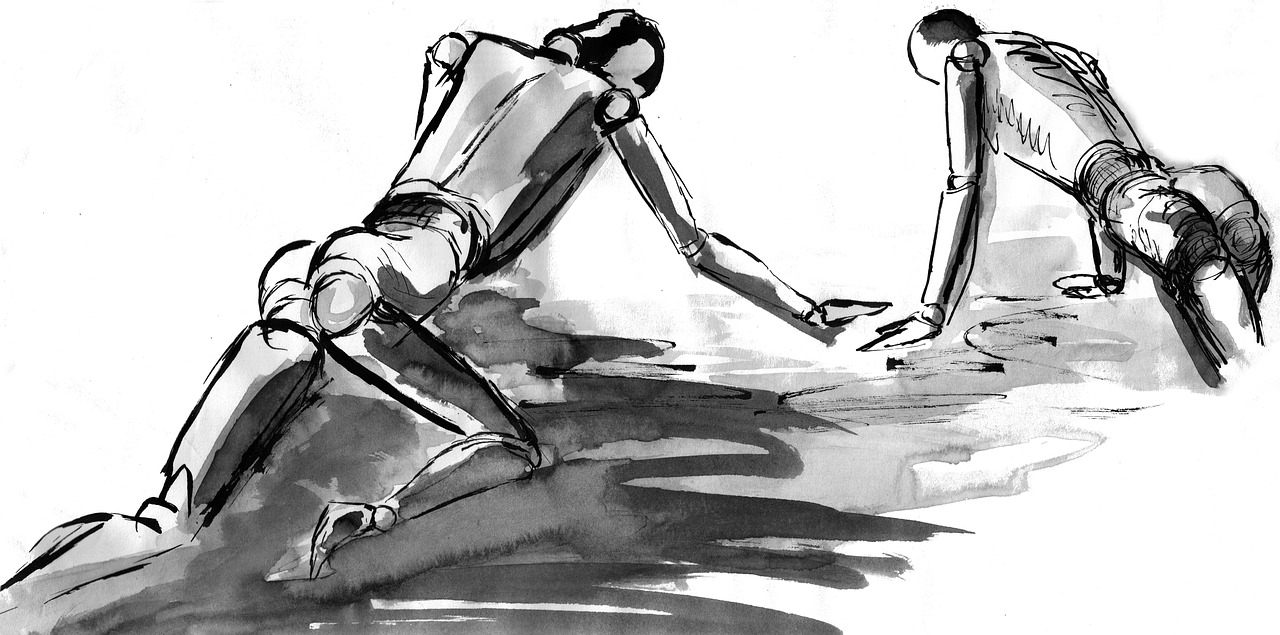
Practice Exercises
Engaging in practice exercises is one of the most effective ways to hone your skills in drawing facial expressions. Just like any other skill, the more you practice, the better you become. Think of it as training for a sport; repetition is key! Here are some exercises that can help you master the art of facial expressions:
First off, start with basic shapes. Before diving into the details of facial features, sketch simple shapes to represent the head and facial structure. This will help you focus on proportions and placements. Use circles for the head and ovals for the jawline, and from there, you can build the features. Remember, every great artist begins with a solid foundation!
Next, practice drawing from life. Observing real people can provide invaluable insights into how expressions change with emotion. Find a friend or family member and ask them to display different emotions. You can also use a mirror to make faces yourself! This allows you to see the subtle changes in your own features, which can be incredibly enlightening.
Another effective exercise is to create an expression chart. Draw a series of faces that display different emotions such as happiness, sadness, anger, and surprise. You can organize your chart in a table format, like so:
| Emotion | Key Features |
|---|---|
| Happiness | Upturned mouth, crinkled eyes |
| Sadness | Downturned mouth, drooping eyelids |
| Anger | Furrowed brows, clenched jaw |
| Surprise | Wide eyes, open mouth |
This chart can serve as a quick reference guide when you’re sketching. It’s a fantastic way to visualize how different emotions manifest in facial features.
Lastly, use online resources and tutorials. There are countless videos and articles dedicated to drawing expressions. These can provide you with different techniques and perspectives that you might not have considered. Try to replicate what you see, and don’t hesitate to experiment with your own styles!
Incorporating these exercises into your routine will not only improve your technical skills but also boost your confidence in capturing the essence of human emotion in your artwork. Remember, every artist has their unique journey, so be patient with yourself and enjoy the process of learning!
Q: How often should I practice drawing expressions?
A: Aim for at least 20-30 minutes a day. Consistent practice is key to improvement!
Q: Can I use photographs for reference?
A: Absolutely! Photographs can provide excellent references for studying facial expressions and features.
Q: What if I struggle with proportions?
A: Don’t be discouraged! Focus on breaking down the face into basic shapes and gradually refine as you go. Practice makes perfect!
Q: Are there specific emotions I should focus on first?
A: Start with basic emotions like happiness, sadness, and anger. Once you feel comfortable, you can explore more complex emotions.

Shading Techniques
This guide provides essential tips and techniques for beginners to effectively draw people, covering proportions, poses, and expressions to enhance your artistic skills and confidence.
Mastering human proportions is crucial for realistic drawings. This section will explore the basic measurements and ratios that define the human figure, helping you create accurate representations.
Dynamic poses can bring life to your drawings. Here, we discuss techniques for observing and sketching various poses, emphasizing movement and balance to create more engaging artwork.
Learn the differences between static and dynamic poses, and how each influences the overall feel of your drawing. This understanding will enhance your ability to convey emotion and action.
Discover practical tips for capturing dynamic poses quickly, including gesture drawing techniques that focus on movement and flow rather than details.
Creating a library of poses can be invaluable. This section discusses how to collect references and practice from various sources to improve your skills.
Utilizing reference images can greatly enhance your understanding of anatomy and movement. Learn how to effectively use references to improve your drawings.
Facial expressions are vital for conveying emotion. This section will guide you through the basics of drawing different expressions and the underlying anatomy involved.
A solid grasp of facial anatomy is essential for realistic expressions. This part covers the key features and their roles in conveying emotions accurately.
Engaging in practice exercises can significantly improve your skills. Here, we suggest various exercises to help you master facial expressions through repetition and observation.
Shading adds depth and dimension to your drawings. Understanding how to effectively apply shading techniques can transform a flat drawing into a lifelike representation. There are various methods to explore, each offering unique effects that can enhance your artwork. For instance, hatching, a technique that involves drawing closely spaced parallel lines, can create a sense of texture and form. On the other hand, cross-hatching involves layering lines in different directions to build up darker areas, providing a rich, three-dimensional quality to your figures.
Another method worth exploring is blending. This technique softens the transition between light and dark areas, creating smooth gradients that can mimic the soft shadows found on the human body. To illustrate these techniques, consider the following table:
| Technique | Description | Best Used For |
|---|---|---|
| Hatching | Drawing parallel lines to create shading | Textures, light shading |
| Cross-Hatching | Layering lines in different directions | Depth, darker shadows |
| Blending | Softening transitions between shades | Realistic skin tones, smooth shadows |
Understanding light and shadow is key to creating depth. The way light interacts with the human figure can drastically change the perception of form and volume. For instance, consider how a strong light source can cast sharp shadows, emphasizing muscle definition, while a softer light source creates gentle transitions, lending a more ethereal quality to your artwork. By practicing how to represent these effects, you can elevate your drawings from basic sketches to stunning representations of the human form.
Every beginner makes mistakes. This section highlights common pitfalls in drawing people and offers tips on how to avoid them for better results.
Ignoring proportions can lead to unrealistic figures. Here, we discuss how to check and correct proportions to enhance your drawings' accuracy.
Details can make or break a drawing. This section emphasizes the importance of incorporating essential details without overwhelming the viewer.
- What is the best way to practice drawing people? Start with simple shapes and gradually add details. Use reference images and practice regularly.
- How can I improve my shading skills? Experiment with different techniques and practice shading with various light sources to understand how they affect forms.
- What materials do I need to start drawing? Basic materials include pencils, erasers, sketch paper, and possibly charcoal or colored pencils for shading.

Types of Shading
When it comes to drawing, shading is like the magic wand that transforms a flat sketch into a three-dimensional masterpiece. Understanding the can significantly elevate your artwork, giving it depth and realism. There are several techniques you can employ, each with its unique flair and application. Let’s explore some of the most popular methods.
Hatching is one of the simplest yet most effective shading techniques. It involves drawing closely spaced parallel lines to create areas of shadow. The closer the lines are to each other, the darker the area appears. This technique is particularly useful for creating texture and form in your drawings. Imagine it as laying down the groundwork for a building; it sets the foundation for everything else you’ll add later.
Cross-hatching takes hatching a step further by introducing a second layer of lines that intersect the first. This technique allows for greater control over the darkness and texture of the shaded area. By adjusting the density and angle of your lines, you can achieve a variety of effects. It’s like mixing colors on a palette; the more you blend, the richer the result.
Blending is another shading technique that uses a smoother approach. Instead of relying solely on lines, this method employs tools like blending stumps, fingers, or even tissues to smudge and soften the pencil strokes. Blending can create a more gradual transition between light and shadow, which is particularly effective when drawing skin tones or soft fabrics. Think of it as applying makeup; the goal is to create a seamless look that enhances natural beauty.
To help you visualize these techniques, here’s a quick comparison:
| Technique | Description | Best For |
|---|---|---|
| Hatching | Parallel lines to create shadow | Textures, basic shading |
| Cross-hatching | Intersecting lines for depth | Complex shadows, detailed work |
| Blending | Softening lines for smooth transitions | Realistic skin, soft materials |
Additionally, understanding light and shadow is crucial for effective shading. The way light interacts with a figure will determine how you apply these shading techniques. For example, if light hits a person's face from above, the forehead will be lighter, while the areas under the chin and nose will cast shadows. This interplay of light and shadow can be the difference between a flat drawing and one that pops off the page.
In conclusion, mastering these shading techniques is essential for any aspiring artist. Each method has its place, and experimenting with them will not only improve your skills but also help you discover your unique style. Remember, practice is key, so don’t be afraid to get your hands dirty and try out different techniques until you find what works best for you!
- What is the best shading technique for beginners? Hatching is a great starting point for beginners, as it's simple and effective.
- How can I practice shading techniques? You can practice by drawing simple shapes and applying different shading techniques to see how they affect the overall look.
- Can I use shading techniques in digital art? Absolutely! Many digital art programs have tools that mimic traditional shading techniques.
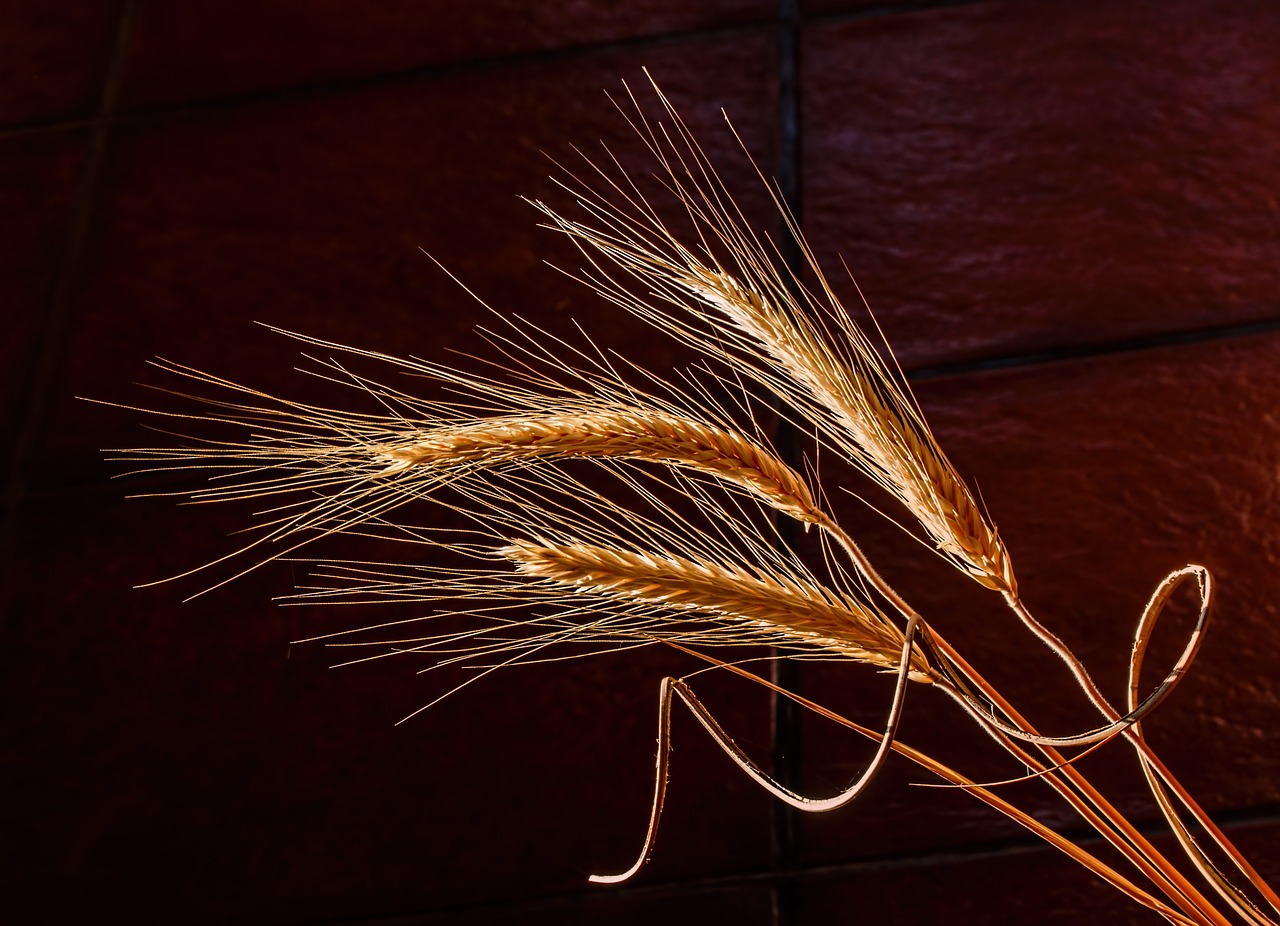
Light and Shadow
Understanding is crucial for creating depth and realism in your drawings of people. Just like a good story needs a plot twist to keep readers engaged, your artwork needs light and shadow to bring it to life! When you grasp how light interacts with the human figure, you can transform flat sketches into vibrant, three-dimensional images.
The first step in mastering light and shadow is recognizing how different light sources affect the form of the body. Whether it’s natural sunlight streaming through a window or the soft glow of a lamp, each light source creates unique shadows and highlights. For instance, direct light creates sharp, defined shadows, while diffused light results in softer, more gradual transitions. Think of it like the difference between a spotlight on a stage and the gentle glow of a sunset—each sets a different mood and tone.
To visualize this better, consider the following table that outlines the effects of different light sources:
| Light Source | Effect on Shadows | Best for |
|---|---|---|
| Direct Sunlight | Sharp, defined shadows | Outdoor scenes, dramatic effects |
| Overcast Day | Soft, diffused shadows | Natural, realistic portraits |
| Artificial Light | Varied shadows depending on type (e.g., fluorescent vs. incandescent) | Indoor settings, mood lighting |
When drawing, it’s essential to observe where the light hits the figure and where it casts shadows. This observation will help you decide where to place highlights and darker areas. A helpful tip is to imagine a light bulb above your subject; where the light shines will be lighter, and the areas away from the light will be darker. This technique can significantly enhance the three-dimensionality of your drawings.
Another important aspect is understanding the concept of cast shadows. These are the shadows that the figure itself creates on the ground or on other objects. They add realism to your artwork by anchoring the figure in space. For instance, if a person is standing, the shadow cast on the ground will stretch away from the light source, creating a sense of depth and context. Remember, shadows are just as important as the figure itself!
As you practice, try experimenting with different shading techniques to represent light and shadow effectively. Techniques like hatching, cross-hatching, and blending can help you achieve various effects. For example, hatching can create a rough texture, while blending can give a smoother transition between light and dark areas. Each technique has its own charm, much like different brush strokes in painting.
In summary, mastering light and shadow is not just about making your drawings look good; it’s about creating a narrative. The interplay of light and shadow can evoke emotions, highlight features, and guide the viewer’s eye. So, grab your sketchbook, find a light source, and start experimenting! You’ll be amazed at how much depth and character you can bring to your drawings of people.
- What are the best light sources for drawing? Natural light from windows is great, but artificial light can also create interesting shadows. Experiment with both!
- How do I practice light and shadow? Start by observing real-life objects under different lighting conditions and sketching them. Pay attention to how light affects shapes.
- Can I use photographs for practice? Absolutely! Reference photos can help you study light and shadow effects on the human figure.

Common Mistakes to Avoid
Every beginner in drawing, especially when it comes to capturing the human figure, tends to stumble upon certain pitfalls that can hinder progress. One of the most prevalent mistakes is overlooking proportions. When you ignore the fundamental ratios that define the human body, your drawings can end up looking distorted or unrealistic. For instance, the average adult figure is often represented as being about 7 to 8 heads tall. If you misjudge this, the entire drawing can feel off-balance. To avoid this, consider using a simple grid method or reference lines to maintain correct proportions throughout your work.
Another common error is neglecting details. While it's essential to capture the overall form and posture of your subject, details are what bring your drawing to life. Small elements such as the curve of a smile, the tilt of a head, or the way fingers bend can make a significant difference in the final piece. However, be careful not to overwhelm your viewer with unnecessary details. Focus on the key features that convey the essence of your subject. For example, when drawing eyes, pay attention to the eyelashes and the way light reflects off the surface, as these can convey a wealth of emotion.
Additionally, many artists fall into the trap of sticking to one viewpoint. Limiting yourself to a single angle can restrict your understanding of the human form. To combat this, try drawing your subject from multiple perspectives. This practice will not only improve your skills but also enhance your ability to visualize the figure in three dimensions. You might even consider setting up a mirror to see yourself in different poses, which can be an intriguing way to explore angles you might not have considered.
Lastly, don’t underestimate the importance of consistent practice. Many beginners expect to see immediate results without putting in the necessary time and effort. Drawing is a skill that requires patience and dedication. Set aside regular time for practice, and don't shy away from experimenting with different styles and techniques. To help you stay on track, consider creating a practice schedule that outlines what you want to focus on each week. Here’s a simple example:
| Day | Focus Area |
|---|---|
| Monday | Proportions |
| Tuesday | Dynamic Poses |
| Wednesday | Facial Expressions |
| Thursday | Shading Techniques |
| Friday | Review and Sketch |
By being mindful of these common mistakes and actively working to avoid them, you can significantly enhance your drawing skills. Remember, every artist has faced these challenges at some point, and learning from them is part of the journey. So, embrace the process, keep practicing, and watch your confidence and abilities grow!
Q: How can I improve my understanding of human proportions?
A: Consider studying anatomy books or online resources that focus on the human figure. Practicing with reference images can also help you grasp proportions better.
Q: What are some good exercises for capturing dynamic poses?
A: Gesture drawing is an excellent exercise. Spend a few minutes sketching quick poses to focus on movement and flow rather than details.
Q: How often should I practice drawing?
A: Aim for at least a few times a week. Consistency is key, so find a schedule that works for you and stick to it!
Q: Are there any specific tools I should use for shading?
A: Experiment with different tools such as pencils, charcoal, and blending stumps. Each tool offers unique effects, so find what works best for your style.
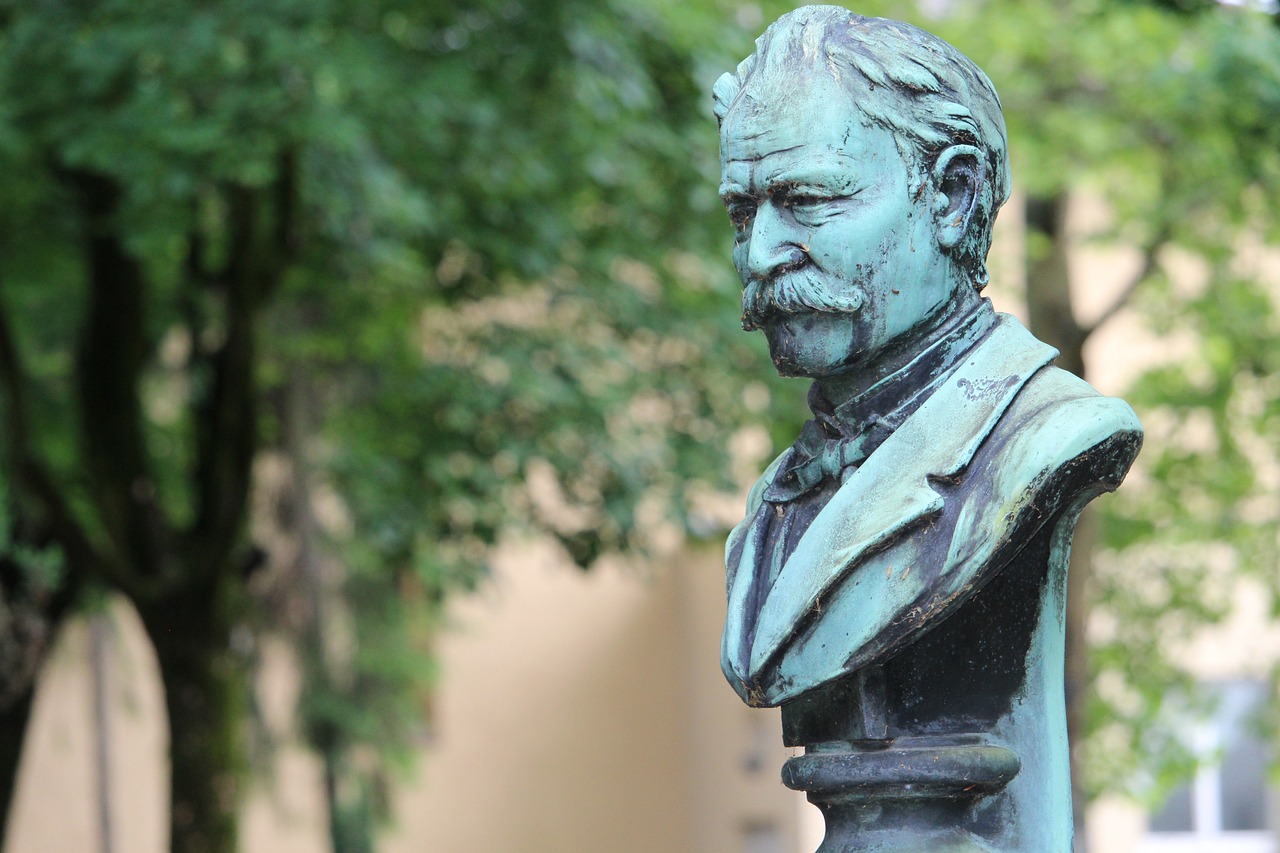
Overlooking Proportions
When diving into the world of drawing, especially when it comes to people, one of the most common pitfalls that beginners face is . You might be eager to put pencil to paper, but if you neglect the fundamental ratios that define the human figure, your drawings can end up looking distorted or unrealistic. Imagine trying to build a house without a blueprint; it might look fine at first, but as you step back, you’ll realize it’s all out of whack. The same principle applies to drawing human figures.
So, what exactly are proportions? In the realm of figure drawing, proportions refer to the relationship between different parts of the body. For instance, the average adult human figure is typically about 7.5 to 8 heads tall. This means that if you measure the height of the head, you can use that measurement to gauge the rest of the body. Here’s a quick breakdown of common proportions:
| Body Part | Proportion (in heads) |
|---|---|
| Head | 1 |
| Torso | 2-3 |
| Legs | 4 |
| Arms | 3 |
By keeping these measurements in mind, you can create a more balanced and realistic figure. However, it’s not just about the numbers; it’s about understanding how these parts interact with each other. For example, the shoulders should align with the hips, and the arms should hang naturally from the shoulder joints. If you find yourself drawing a figure with disproportionately long legs or a tiny head, it can throw off the entire composition.
To avoid these mistakes, take a moment to observe real-life figures or reference images. You might consider using a grid method, where you overlay a grid on your reference image and then replicate that grid on your drawing paper. This can help you maintain accurate proportions and ensure that each part of the body is in harmony with the others. Remember, the goal is to create a cohesive and believable figure that draws the viewer in.
Another useful technique is to practice drawing simple shapes to represent different body parts. For instance, you can use ovals for the torso and limbs, and circles for the joints. This approach can simplify the drawing process and help you focus on achieving the correct proportions before adding details. Think of it as constructing a skeleton before fleshing it out with muscle and skin.
In summary, paying attention to proportions is crucial for any aspiring artist. By carefully observing and practicing these relationships, you’ll be well on your way to creating more realistic and engaging drawings. So, the next time you sit down to draw, remember to take a step back and check your proportions—your artwork will thank you for it!
- What are the basic proportions for drawing a human figure? The average adult human figure is typically about 7.5 to 8 heads tall, with specific ratios for different body parts.
- How can I improve my understanding of human proportions? Practice drawing from life or reference images, and consider using methods like the grid technique to maintain accuracy.
- Why are proportions so important in figure drawing? Proper proportions help create realistic and believable figures, making your artwork more engaging and visually appealing.

Neglecting Details
When it comes to drawing people, details can make or break your artwork. Think of it this way: imagine a beautifully painted landscape, but when you look closer, you notice that the trees are just green blobs. It takes away from the overall impact, right? Similarly, in figure drawing, neglecting details can lead to a lack of realism and depth. Details are what breathe life into your drawings, making them feel authentic and relatable.
To avoid this pitfall, it's essential to understand that details don't just mean adding intricate patterns or textures. They also encompass the subtleties of human features and expressions. For instance, capturing the slight curve of a smile or the way light reflects in someone's eyes can transform a flat drawing into a vibrant portrayal. Here are a few key areas where details matter:
- Facial Features: Pay attention to the unique characteristics of each face. No two people are alike, and even small variations can create a more engaging image.
- Body Language: Subtle gestures, like the tilt of a head or the positioning of hands, can convey a wealth of emotion and narrative.
- Clothing and Accessories: These elements can provide context about the character and add layers to your drawing.
While it’s important to include these details, it’s equally vital to strike a balance. Overloading your drawing with excessive detail can lead to confusion and detract from the focal point. Instead, aim for a harmonious integration of details that enhance rather than overwhelm. A good practice is to start with a general outline and gradually build up details, constantly stepping back to evaluate how they contribute to the overall composition.
Incorporating details effectively requires practice and observation. Spend time studying real-life subjects or reference images to understand how light, texture, and form interact. The more you observe, the more you'll develop an eye for what details are essential and which can be simplified. Remember, it's not about capturing every single detail, but rather about selecting the ones that tell the most compelling story.
- How can I improve my attention to detail in drawing? Practice regularly by sketching from life or using reference images, focusing on the unique characteristics of your subjects.
- Is it better to start with details or the overall shape? It's generally best to start with the overall shape and structure before gradually adding details to ensure a solid foundation.
- What are some common mistakes to avoid when adding details? Avoid overloading your drawing with unnecessary details, and ensure that the details you include enhance the overall composition.
Frequently Asked Questions
- What are the basic proportions I should know when drawing people?
Understanding the basic proportions of the human figure is essential. Generally, an adult's height is about 7.5 to 8 heads tall. The width of the shoulders is roughly 2 to 3 heads wide. Familiarizing yourself with these ratios will help you create more realistic figures.
- How do I capture dynamic poses effectively?
To capture dynamic poses, focus on gesture drawing. This technique emphasizes the flow and movement of the body rather than intricate details. Spend a few minutes sketching quick poses from life or reference images to improve your ability to convey motion.
- Why is it important to use reference images?
Reference images are invaluable for understanding anatomy and movement. They help you observe how different body parts interact in various poses, allowing you to replicate these nuances in your drawings. Don't hesitate to gather a library of references for practice!
- What are some tips for drawing facial expressions?
Start by breaking down the face into basic shapes and understanding the underlying anatomy. Practice drawing different expressions by focusing on key features like the eyes, mouth, and eyebrows. Remember, small changes can convey a wide range of emotions!
- What shading techniques should I learn?
Explore various shading techniques such as hatching, cross-hatching, and blending. Each technique creates different effects, so experiment with them to see which works best for your style. Understanding how to represent light and shadow will add depth to your artwork.
- What are common mistakes to avoid when drawing people?
Some common mistakes include overlooking proportions and neglecting details. Always double-check your proportions to ensure accuracy, and remember that details enhance your drawing without overwhelming it. Practice makes perfect!



















